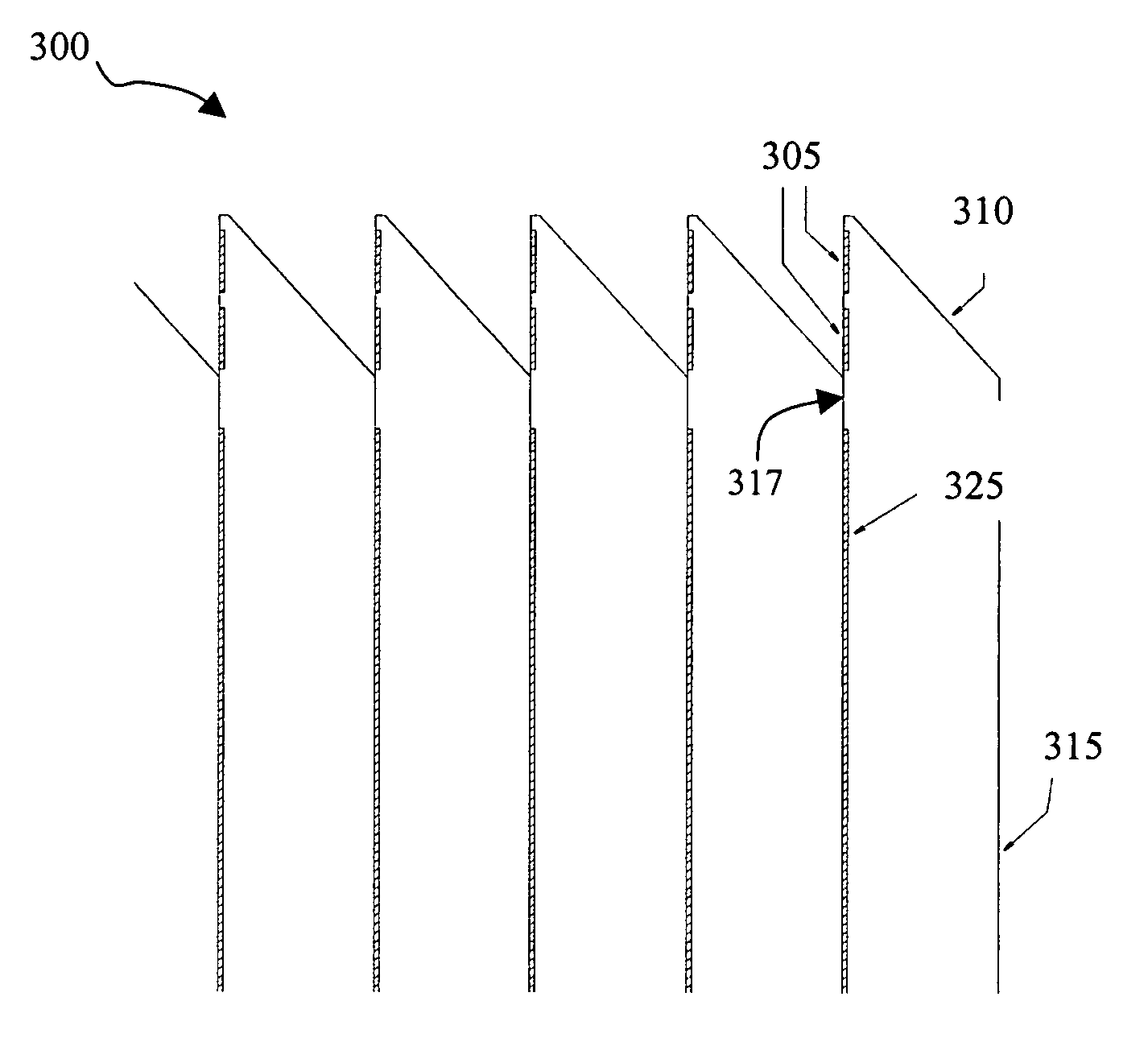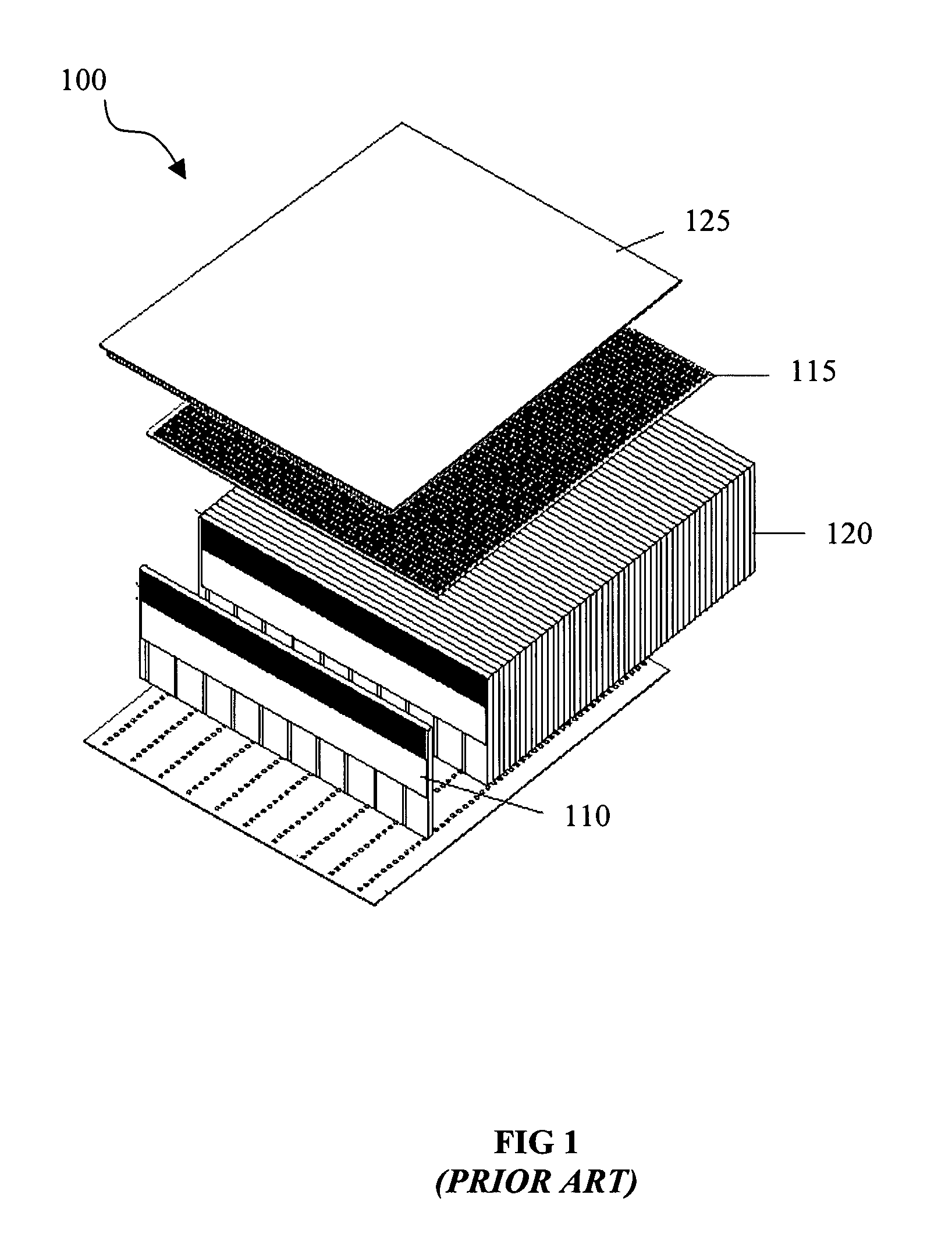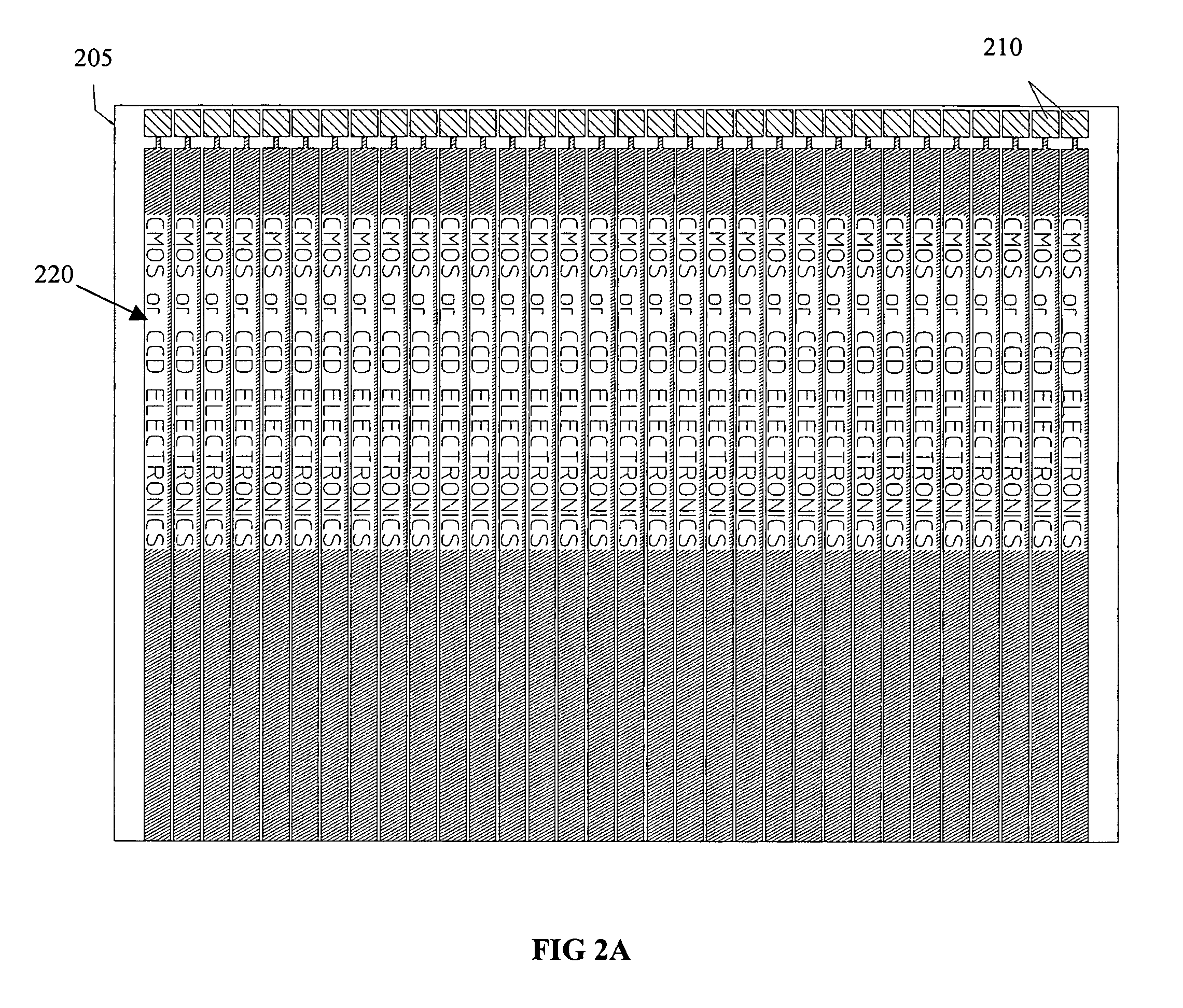3-D readout-electronics packaging for high-bandwidth massively paralleled imager
a massive parallel imager and readout technology, applied in the field of electronics component packaging, can solve the problems of complex and expensive hybrid approach of bonding the sensor chip to the roic cube as shown in fig. 1, affecting performance, packaging, complexity of the finished 3-d stack, etc., and achieve the effect of increasing the functionality per pixel
- Summary
- Abstract
- Description
- Claims
- Application Information
AI Technical Summary
Benefits of technology
Problems solved by technology
Method used
Image
Examples
Embodiment Construction
[0026]The purpose of the current invention is to inexpensively provide a means of increasing the functionality available in concepts related to “camera-on-a-chip” through a 3-D method. Described herein is an approach to reconcile the opposing demands for smaller, denser pixels and greater functionality.
[0027]Referring to FIG. 1 (labeled “Prior Art”), a vertically stacked chip architecture 100 has been used to address complex electronic component interconnection problems. In this scheme, the readout integrated circuits (ROICs) 110 are stacked vertically (like playing cards) into a cube configuration 120. Another integrated circuit die 115, a fully depleted high-pixel photo-diode focal plane array (FPA), is bump bonded to the top edge surface of the resulting ROIC cube 120. The stacked cube edge footprint is contained within the X-Y dimensions of the photo-diode FPA die 125, so as to permit tiling a number of similar assemblies into large arrays. Input / output (I / O) from these cubes is...
PUM
 Login to View More
Login to View More Abstract
Description
Claims
Application Information
 Login to View More
Login to View More - R&D
- Intellectual Property
- Life Sciences
- Materials
- Tech Scout
- Unparalleled Data Quality
- Higher Quality Content
- 60% Fewer Hallucinations
Browse by: Latest US Patents, China's latest patents, Technical Efficacy Thesaurus, Application Domain, Technology Topic, Popular Technical Reports.
© 2025 PatSnap. All rights reserved.Legal|Privacy policy|Modern Slavery Act Transparency Statement|Sitemap|About US| Contact US: help@patsnap.com



